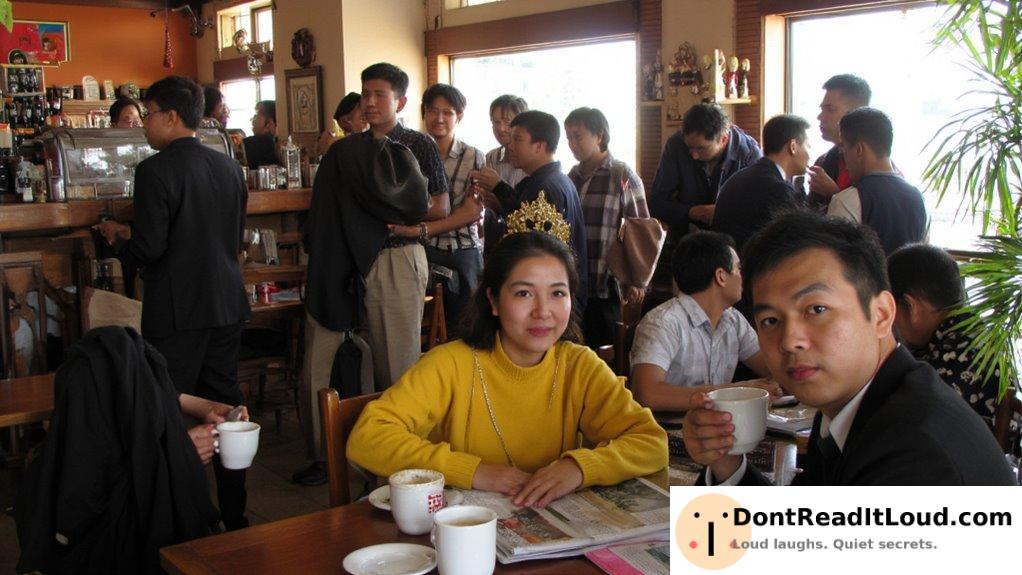
In Malaysia, wearing yellow is reserved for royalty because of its deep connection to political movements and dissent. The ban arose during protests demanding fair elections, where yellow became a powerful symbol of reform. Yellow traditionally stands for royalty and authority in Malaysian culture. Violating this rule can lead to fines or legal trouble. Want to learn more about the cultural meaning behind this color and what it reveals about Malaysian society? There’s much more to explore!
The Origin of This Law

The law making it illegal to wear yellow in Malaysia emerged during a time of intense political unrest, demonstrating how governments can impose legal restrictions to suppress opposition. This unusual regulation can be traced to the Bersih movement, a series of protests demanding electoral reforms in Malaysia.
Bersih, meaning “clean” in Malay, started in 2006 as a coalition pushing for transparent and fair elections. Protesters at Bersih rallies wore yellow T-shirts, making the color a symbol of the movement’s demand for honesty and democracy.
In 2011, before the Bersih 2.0 rally, the government under Prime Minister Najib Razak outlawed the Bersih group, claiming it threatened public order. Authorities then extended a ban to yellow clothing and accessories, linking them with illegal gatherings and government opposition.
The Home Ministry argued that yellow attire was inciting unrest and undermining authority. This ban was widely viewed as an extreme attempt to silence dissent and restrict expression.
Human rights groups and international observers criticized the law, calling it a violation of fundamental rights.
The origin of this law shows how a simple color can become a potent political emblem. The government’s crackdown on Bersih reveals the extent to which those in power may go to limit activism and retain control, reflecting a broader trend of laws arising from specific political situations to protect authority.
Why This Law Exists

In Country, the law against wearing yellow stems from a mix of cultural, political, and practical factors that keep it relevant today.
Culturally, yellow carries deep symbolism in Country, representing royalty, authority, and divinity. Traditionally, only the ruling class could wear yellow, marking their elevated status. Preserving this custom allows the country to honor its heritage and uphold long-standing traditions.
On the political side, the ban helps maintain clear social hierarchies. Restricting yellow to certain individuals reinforces class distinctions and keeps authority symbols exclusive to the elite. This control helps prevent challenges to the established order and supports social stability.
From a practical standpoint, yellow has recently become a color of protest and resistance. By banning it, authorities can quickly spot and deter acts of dissent before they spread. This measure helps keep public order and reduces the risk of unrest.
How This Law Reflects it’s Culture?

The law that bans wearing yellow in a certain country might seem odd, but it reflects that nation’s unique history, cultural values, and social norms.
- Historical Significance: In some societies, colors like yellow have been tied to royalty or privilege. Limiting its use today helps maintain that historical connection and exclusivity.
- Symbolic Meaning: Colors often carry deep meaning. Yellow might represent prosperity, divinity, or even dissent, so the law could aim to protect its significance or prevent misuse.
- Social Hierarchy and Respect: Restricting yellow may highlight the country’s respect for traditions and established social order, reinforcing the importance of honoring authority and roles.
- Collective Identity: Regulations like this can strengthen national identity. Following such rules can help citizens feel more connected to their shared heritage.
- Cultural Preservation: Many countries value preserving their customs. Unusual laws may exist to safeguard traditions for future generations.
Recognizing these cultural factors helps explain the reasoning behind such laws and their role in upholding tradition.
What Happens If You Break This Law?

In the country where wearing yellow is illegal, authorities strictly enforce the rule, and violators can face a range of penalties. If someone is found in yellow attire, they might first receive a warning, particularly for a first offense. Repeated violations or openly defying the law can lead to harsher consequences.
Most often, offenders are fined, with amounts starting low for first-time offenses and increasing for subsequent breaches. The specific fine depends on the local jurisdiction and aims to discourage further violations.
Persistent disregard for the law can lead to more serious legal action. Offenders might be summoned to court, where a judge could order community service or attendance at educational sessions explaining the reasons behind the yellow clothing ban.
Public opinion about the law is divided. Some people support it, believing it protects cultural or historical values. Others view it as restricting individual freedom, sparking protests and debate.
In certain places, wearing yellow has become a quiet act of resistance, fueling ongoing discussions about the law’s relevance today.
Could Other Countries Learn from This Law?

The law making it illegal to wear yellow in a particular country is certainly unique and intriguing. This type of legislation might be rooted in historical, political, or cultural contexts that are specific to the country in question. To determine if other countries could learn from this law, it’s essential to explore the reasons behind it and compare it to similar regulations elsewhere.
Contextual Understanding
- Historical or Political Reasons: Often, such laws are enacted due to historical events or political movements. For instance, yellow might’ve been associated with a political protest, movement, or dissent that the government seeks to suppress.
- Cultural Significance: In some cultures, colors carry specific meanings or connotations. Yellow might represent something undesirable or controversial, prompting legal restrictions.
Comparative Analysis
- Color Bans in Other Countries: While the outright banning of a color is rare, some countries have restrictions on symbols or attire associated with political movements. For example, certain symbols related to past regimes or extremist groups are banned in various European countries to prevent hate speech or the resurgence of extremist ideologies.
- Symbolic Dress Codes: Countries like France have implemented laws concerning religious symbols and attire in public spaces, which are also rooted in broader debates about secularism and public order. These laws have sparked significant controversy and discussions about personal freedoms versus national values.
Can Others Learn from This Law?
- Unique Contexts: The specific ban on wearing yellow is likely tied to unique cultural or political contexts, making it difficult for other countries to directly adopt similar legislation unless they face analogous situations.
- Lessons on Social Harmony: Other countries might learn from the underlying intent of such laws, which is often to maintain social harmony and national unity. However, the methods of achieving these goals should respect individual freedoms and cultural diversity.
- Balancing Freedoms and Order: Countries can reflect on how to balance individual freedoms with the need for public order and cohesion. Open dialogues and democratic processes can help address these challenges without resorting to overly restrictive measures.
Conclusion
While the law against wearing yellow is highly specific and context-driven, it can prompt discussions on how societies manage symbols, attire, and expression in the public sphere. Other countries mightn’t directly replicate this law, but they can learn from the broader principles of maintaining social cohesion while respecting individual rights. The key is finding a balance that aligns with each country’s unique cultural and political landscape.
Conclusion: What Makes this Law So Unique
The law prohibiting the wearing of yellow in this country stands out as a rare cultural and legal oddity on the world stage. This regulation isn’t just uncommon—it reflects the unique cultural and historical background that inspired its creation. Unlike typical clothing laws that focus on modesty or safety, this one is rooted in a distinct story or tradition specific to the nation.
The severity of the law highlights how much importance the society places on the color yellow, hinting at its deep symbolic or historical value. This may relate to national pride, significant historical moments, or cherished beliefs that mightn’t be obvious to outsiders.
Other nations may view this law with curiosity, as it demonstrates how legal systems can embody cultural values in highly particular ways. It reminds us that laws are more than rules—they can also express a society’s identity. While such a law mightn’t suit other countries, given their own traditions, it’s worthwhile to see how heritage can influence legal frameworks.
This law exemplifies the world’s rich cultural diversity and shows how closely law and culture can be connected.



